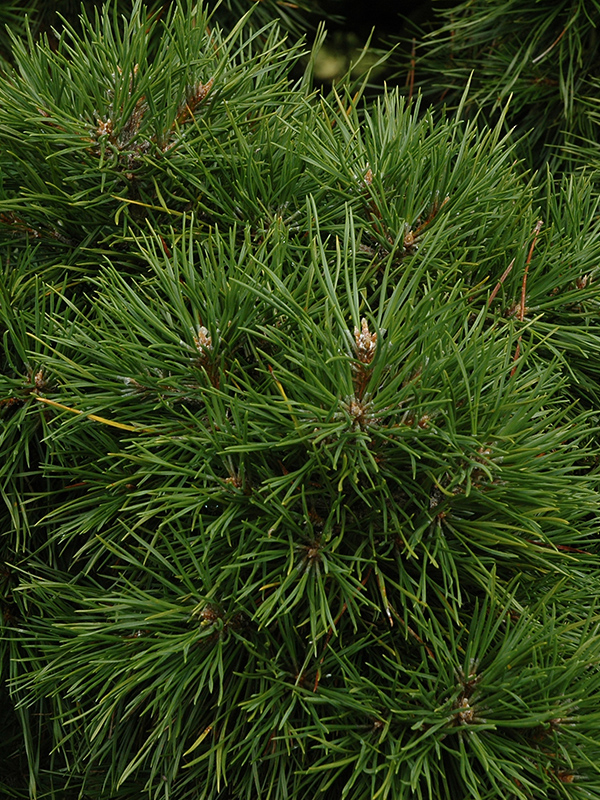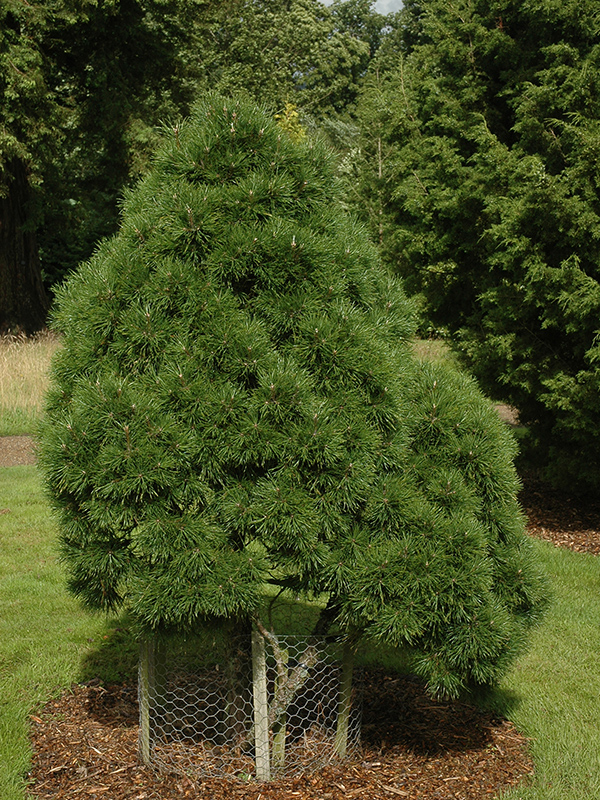| General Description | A dwarf evergreen conifer with a globe like pyramidal form. Densely shaped, slow growing, approximately 6-7 cm of growth per year. |
| ID Characteristic | Distinct light green needles that turn a golden yellow in winter. |
| Shape | Upright dwarf conifer, with a compact and rounded shape. |
| Landscape | Used most frequently as a feature plant for its intensely yellow-gold foliage and exfoliating bark through winter. |
| Propagation | A side veneer-graft is used, on a smooth area on the rootstock, where a downward cut is made approximately 25-30 mm long. A cutting is prepared with the same cut, then is ready to be placed into the rootstock. Both are tightly sealed with plastic tape and/or grafting wax, allowing the vascular cambium to grow together. |
| Cultivation | Prefers full sun and well drained soil. Cannot withstand 'wet feet' and is not drought tolerant. |
| Pests | Potential for Diplodia and pine wilt fungus. |
| Habitat | Horticultural origin. |
| Bark/Stem Description | Young bark is medium textured with an orange tinge, becoming brownish-grey and scaly as it matures. |
| Flower/Leaf Bud Description | Moderately spherical and cylindrical, 5-7 cm long. |
| Leaf Description | Light green, 5-6 cm long needles that turn yellow-gold in the winter; 2 needles per fascicle. |
| Flower Description | Monoecious flowers in late May, pollen is spread from yellow male strobili. Pink female strobili mature into young green cones. |
| Fruit Description | Slightly sharp pointed scales and compact as new cones, gradually expanding and becoming dull with maturity; mature cones are 5-7 cm long. |
| Colour Description | Young bark has an orange tinge, maturing into brownish-grey. Light green foliage that turns yellow-gold. |
| Texture Description | Medium texture when young becoming coarse towards maturity. |


